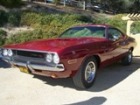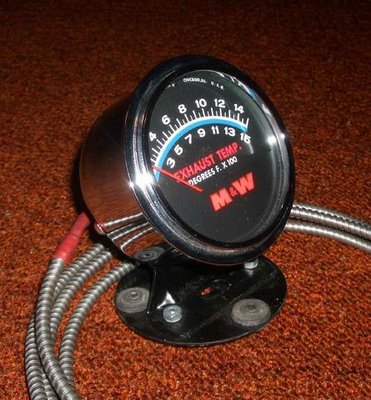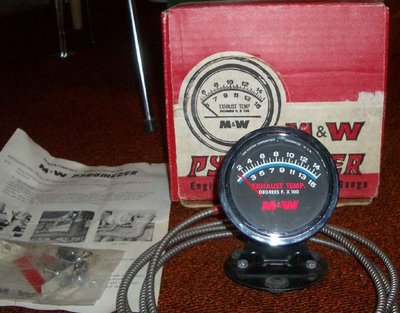8 posts
• Page 1 of 1
Measuring the exhaust temperature - Why?
I have never seen an exhaust temperature gauge before! What is good for? is it a dragracing gauge?
- christer
- Ghost 48
- Posts: 2133
- Joined: 13 Oct 2006 19:52
- Location: Sweden
-

dave-r - Grumpy Old Man
- Posts: 9842
- Joined: 12 Oct 2003 21:45
- Location: North of the Tyne, England
-

Jon - Frequent Poster
- Posts: 1229
- Joined: 21 Aug 2005 15:12
- Location: Medford Oregon
You know the baseline as fuel burns at a set temp. So putting an exhaust temp gauge will allow you to read the exhaust temps. Hotter temp equals leaner condition and vice versa. The gauge has a sensor that is mounted in the exhaust. If you have a turbo or cats, you mount the sensor ahead of them.
The exception is a rotary engine. My RX-7 runs around a 1200 degree F temp as opposed to approximately 600 degree F temp on a reciprocating assembly. (When my 7 was running, I wouldn't park on dry grass just for that reason).
The exception is a rotary engine. My RX-7 runs around a 1200 degree F temp as opposed to approximately 600 degree F temp on a reciprocating assembly. (When my 7 was running, I wouldn't park on dry grass just for that reason).
- fal308
- Frequent Poster
- Posts: 981
- Joined: 01 Jan 2004 13:57
- Location: Pacific MO
- fal308
- Frequent Poster
- Posts: 981
- Joined: 01 Jan 2004 13:57
- Location: Pacific MO
Around 1200-1400 degrees F. The hotter the better, up to the point that alluminum almost starts to melt! The back it down  Seriously, it all depends on engine design, alloy used in the block&heads, air charge temp,compression ratio, cooling capacity, exhaust, chamber design, camshaft timing, ect.. But the hotter the combustion process the better as far as power production. The thing you have to remember is rich conditions will lower temps and lean will increase it to the point of meltdown, the 'fine line' is tricky! During pre-ignition&detonation those temps can reach 6500 degrees F. momentarily. Thats why ignition timing is very important, only use mechanical/vacum advance to the point where the engine stops making power or trap speed. No more, over advancing on the long run causes more harm then good.
Seriously, it all depends on engine design, alloy used in the block&heads, air charge temp,compression ratio, cooling capacity, exhaust, chamber design, camshaft timing, ect.. But the hotter the combustion process the better as far as power production. The thing you have to remember is rich conditions will lower temps and lean will increase it to the point of meltdown, the 'fine line' is tricky! During pre-ignition&detonation those temps can reach 6500 degrees F. momentarily. Thats why ignition timing is very important, only use mechanical/vacum advance to the point where the engine stops making power or trap speed. No more, over advancing on the long run causes more harm then good.
-

Eddie - Frequent Poster
- Posts: 6212
- Joined: 16 Oct 2006 21:26
- Location: Terre Haute, Ind.
Good point Dave. Which is why I am going to use a thermocouple strap and a pyrometer on the exhaust tube. From my experience,(we tested a small block Chevy), those temps will be varied by a few hundred degrees either way if a carb is used. If Fuel injected those temp variations are much less pronounced. Fuel distribution is not as good with a carburetor as port fuel injection. Therefore, all the combustion chambers will have a different temp reading, thats why the sparkplugs in an injected car pretty much look all the "same" In a carbed car some plugs are darker/lighter than the others, this is normal up to a point.dave-r wrote:If you monitor exhaust temp from each cylinder you can tell if one is richer or leaner than another or if one is not firing.
-

Eddie - Frequent Poster
- Posts: 6212
- Joined: 16 Oct 2006 21:26
- Location: Terre Haute, Ind.
8 posts
• Page 1 of 1

